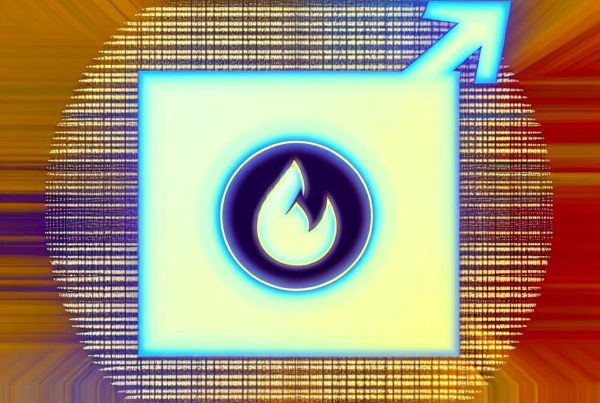Understanding Synthetic Crypto Assets
The cryptocurrency landscape is constantly evolving, introducing innovative financial instruments that cater to diverse investment strategies. Among these innovations are synthetic crypto assets, which have gained traction for their unique characteristics and potential benefits. This article delves into what synthetic crypto assets are, how they function, their advantages and risks, and their role in the broader cryptocurrency ecosystem.
What Are Synthetic Crypto Assets?
Synthetic crypto assets are financial instruments that mimic the value of underlying assets without requiring direct ownership of those assets. They are created using smart contracts on blockchain platforms, allowing users to gain exposure to various cryptocurrencies, commodities, or even traditional financial assets without actually holding them. This mechanism enables traders to speculate on price movements and hedge against market volatility.
How Do Synthetic Crypto Assets Work?
The creation of synthetic crypto assets typically involves the use of decentralized finance (DeFi) protocols. These protocols utilize collateralization and oracles to ensure that the synthetic asset accurately reflects the value of the underlying asset. Here’s a breakdown of the process:
- Collateralization: Users deposit a certain amount of cryptocurrency as collateral to mint synthetic assets. This collateral is locked in a smart contract.
- Oracles: Oracles are third-party services that provide real-time price data from various markets. They ensure that the synthetic asset’s value is aligned with the actual market price of the underlying asset.
- Minting and Trading: Once the collateral is locked, users can mint synthetic assets, which can then be traded on decentralized exchanges (DEXs) or used in other DeFi applications.
Types of Synthetic Crypto Assets
Synthetic crypto assets can be categorized into several types based on the underlying assets they represent:
- Synthetic Cryptocurrencies: These mimic the price movements of popular cryptocurrencies like Bitcoin (BTC) or Ethereum (ETH).
- Synthetic Commodities: These represent the value of physical commodities such as gold, silver, or oil.
- Synthetic Indices: These track the performance of a group of assets, such as a basket of cryptocurrencies or stocks.
- Synthetic Fiat Currencies: These allow users to gain exposure to traditional fiat currencies like the US Dollar (USD) or Euro (EUR).
Advantages of Synthetic Crypto Assets
Synthetic crypto assets offer several advantages that make them appealing to traders and investors:
- Access to Diverse Markets: Synthetic assets provide exposure to a wide range of assets without the need for direct ownership, allowing for greater diversification.
- Leverage: Many platforms allow users to trade synthetic assets with leverage, amplifying potential returns (and risks).
- Hedging Opportunities: Traders can use synthetic assets to hedge against price fluctuations in the underlying assets.
- Decentralization: Synthetic assets are often created and traded on decentralized platforms, reducing reliance on traditional financial institutions.
Risks Associated with Synthetic Crypto Assets
While synthetic crypto assets present numerous opportunities, they also come with inherent risks:

- Smart Contract Vulnerabilities: Bugs or exploits in smart contracts can lead to significant losses.
- Market Manipulation: The decentralized nature of synthetic assets can make them susceptible to price manipulation.
- Collateral Liquidation: If the value of the collateral falls below a certain threshold, it may be liquidated to cover losses.
- Regulatory Risks: As the regulatory landscape evolves, synthetic assets may face scrutiny, impacting their legality and usability.
Popular Platforms for Trading Synthetic Crypto Assets
Several platforms have emerged as leaders in the synthetic asset space, each offering unique features and benefits:
- Synthetix: One of the most well-known platforms for creating and trading synthetic assets, Synthetix allows users to mint synthetic cryptocurrencies and commodities.
- Mirror Protocol: Built on the Terra blockchain, Mirror Protocol enables the creation of synthetic assets that track the price of real-world assets.
- UMA (Universal Market Access): UMA allows users to create synthetic assets and derivatives, focusing on providing a framework for decentralized financial contracts.
- Injective Protocol: This platform offers a decentralized exchange for trading synthetic assets with zero gas fees and high-speed transactions.
Real-World Use Cases of Synthetic Crypto Assets
Synthetic crypto assets have found various applications across different sectors, showcasing their versatility and potential impact:
- Hedging Against Market Volatility: Traders can use synthetic assets to hedge against price fluctuations in cryptocurrencies, commodities, or fiat currencies.
- Accessing Global Markets: Investors can gain exposure to international assets without the complexities of cross-border transactions.
- Speculative Trading: Traders can leverage synthetic assets to speculate on price movements, potentially increasing their returns.
- Portfolio Diversification: Synthetic assets allow investors to diversify their portfolios by including a range of asset classes.
Future of Synthetic Crypto Assets
The future of synthetic crypto assets looks promising as the DeFi ecosystem continues to grow. Innovations in blockchain technology, regulatory clarity, and increased adoption of decentralized finance will likely drive the development of synthetic assets. As more users seek alternative investment opportunities, synthetic assets may play a crucial role in shaping the future of finance.
FAQs About Synthetic Crypto Assets
What is the difference between synthetic assets and traditional assets?
Synthetic assets are digital representations of traditional assets created using blockchain technology. Unlike traditional assets, synthetic assets do not require direct ownership and can be traded on decentralized platforms.
Are synthetic crypto assets safe to invest in?
While synthetic crypto assets offer unique opportunities, they come with risks such as smart contract vulnerabilities and market manipulation. Investors should conduct thorough research and consider their risk tolerance before investing.
Can I create my own synthetic crypto assets?
Yes, many platforms allow users to create their own synthetic assets by locking collateral and using smart contracts. However, it requires a good understanding of the underlying technology and market dynamics.
How do I trade synthetic crypto assets?
Synthetic crypto assets can be traded on decentralized exchanges (DEXs) that support them. Users need to connect their cryptocurrency wallets to the platform and follow the trading process outlined by the specific DEX.
What are the tax implications of trading synthetic crypto assets?
The tax implications of trading synthetic crypto assets vary by jurisdiction. It is essential to consult with a tax professional to understand how synthetic asset trading may impact your tax obligations.
Conclusion
Synthetic crypto assets represent a significant advancement in the cryptocurrency industry, offering innovative ways for traders and investors to gain exposure to various asset classes. While they come with unique advantages, such as diversification and access to global markets, they also carry risks that must be carefully considered. As the DeFi landscape continues to evolve, synthetic assets are likely to play an increasingly important role in shaping the future of finance.
For the latest news and updates on cryptocurrency, including synthetic assets, visit Bitrabo. Follow me on social media for more insights: X, Instagram, and Threads.
Disclaimer: This article is for informational purposes only and should not be considered financial advice. Always conduct your own research and consult with a financial advisor before making investment decisions.
The Crypto Watchlist of the Week 🔎
Subscribe to receive expert-curated projects with real potential—plus trends, risks, and insights that matter. Get handpicked crypto projects, deep analysis & market updates delivered to you.

